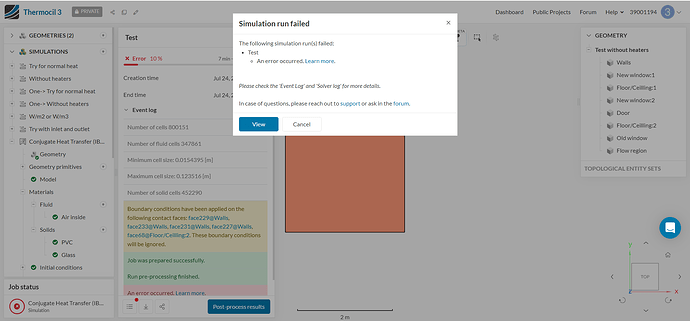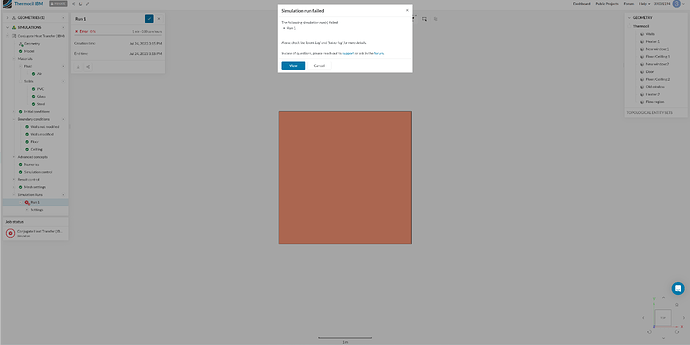Hi!
I was wondering if it’s possible to perform a simulation showing the evolution of an airflow heated by two radiators in an room without air inlet or outlet. I want to visualize the movement of the air inside the room starting at a temperature of 5°C and gradually heating it until it reaches its final temperature of around 24°C. Currently, I’ve only managed to simulate the airflow in the room at its final temperature by using the " Conjugate Heat Transfer v2.0", but I would like to observe the air’s transition from 5°C to 24°C. Is this feasible? If so, what type of simulation should I use?
On the forum, someone responded to my question and suggested using the “Heat Transfer” simulation, but it doesn’t work for what I want to achieve because it only allows assigning solids, not a fluid like air.
Could someone assist me in finding a suitable solution for my project? I sincerely appreciate your help!
1 Like
Hi @39001194,
Thanks for posting your question!
Yes, that is absolutely feasible, and I suggest you to use Conjugate Heat Transfer (IBM) for that purpose. Here you can see some details on how to perform that:
Please try that and let us know how your project goes.
best,
Hi !
By following your adviser, I tried the simulation "Conjugate Heat Trasnfer (IBM). However, when I try to run the simulation, I receive this message.
I also tried to do the simulation on an empty project but I get the same type of message.
I do not understand how I can fix the problem.
Can someone help me please ?
I managed the problem. However, I do not understand how I can do to see the evolution of the temperature. For example at the base the air must be at 5°C because it is the ambient temperature, but when I look at the first iteration (59 out of 1000), I obtain a temperature in the room of 22°C.
The room has no airflow inlet or outlet. In the room I have just 2 radiators which are at 35°C.
So my problem is that I can’t get the temperatures right. I programmed the same boundary conditions as I did for my “Conjugate Heat Transfer v2.0” simulation. On the other hand I do not have the same temperature at the end and I do not see the evolution of the temperature, from 5°C to 23°C.

